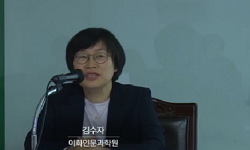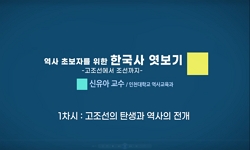본고는 2000년 이후 사설시조 연구의 성과를 종합함으로써 2000년 전후로 제기된 성찰과 전망이 사설시조 연구를 어떻게 바꾸어 놓았는지 고찰하고 앞으로 유념해야 할 사설시조 연구의 과제...
http://chineseinput.net/에서 pinyin(병음)방식으로 중국어를 변환할 수 있습니다.
변환된 중국어를 복사하여 사용하시면 됩니다.
- 中文 을 입력하시려면 zhongwen을 입력하시고 space를누르시면됩니다.
- 北京 을 입력하시려면 beijing을 입력하시고 space를 누르시면 됩니다.
https://www.riss.kr/link?id=A108967683
-
저자
박영민 (한국방송통신대학교)
- 발행기관
- 학술지명
- 권호사항
-
발행연도
2024
-
작성언어
Korean
-
주제어
고전시가 ; 사설시조 ; 조선 후기 ; 이행기 ; 리얼리즘 ; 담론 ; Saseolsijo ; Korean Classical Poetry ; the Late Joseon ; the Transition Period ; Realism ; Discourse.
-
등재정보
KCI등재
-
자료형태
학술저널
- 발행기관 URL
-
수록면
107-157(51쪽)
- DOI식별코드
- 제공처
-
0
상세조회 -
0
다운로드
부가정보
국문 초록 (Abstract)
본고는 2000년 이후 사설시조 연구의 성과를 종합함으로써 2000년 전후로 제기된 성찰과 전망이 사설시조 연구를 어떻게 바꾸어 놓았는지 고찰하고 앞으로 유념해야 할 사설시조 연구의 과제를 도출하는 데에 목적을 두었다.
시학과 미의식 분석에 기반하여 장르적 성격을 도출한 연구는 사설시조가 조선 후기의 일상과 경험, 감각과 인식, 감정과 욕망 등을 어떻게 언어화했는지 묻는다. 이 논의는 결과적으로 리얼리즘 개념을 환기하므로 리얼리즘 이론을 확대 적용할 가능성을 모색할 필요가 있었다. 그 결과, 인식의 방법으로서 총체성 개념에 기반하여 은폐된 상태에 놓인 무언가를 재현하려 하는, 이러한 문학적 재현을 토대로 당면한 현실을 부단히 갱신하려 하는 리얼리즘의 지향이 드러났다. 여기에 비추어 사설시조가 자기 시대를 어떻게 언어화했는지, 어떻게 새로운 세계를 열어 보였는지 끊임없이 재해석해야 한다는 결론에 다다랐다. 조선 후기 문학에 대한 리얼리즘적 탐색이 요청되는 것이다.
여성적 형상과 목소리에 비추어 여성의 삶과 욕망을 고찰하려 한 논의에서는 사설시조에 나타난 애욕과 성 담론을 어떻게 평가할 것인가 하는 점이 문제가 되었다. 그런데 이 논점은 사설시조가 지닌 익명성을 간과한 채 남성 아니면 여성, 상층 아니면 하층 등의 구도로 그 담당층의 성격을 재단한 데서 비롯한 듯하다. 따라서 텍스트 내에서 언어가 짜이는 방식, 즉 담론을 분석하여 담론 형성에 관여한 주체의 성격과 주체가 대상과 맺는 관계를 도출할 것을 제안했다. 사설시조를 열린 텍스트로 간주하여 애욕과 성이 언어화되는 과정을 고찰할 때 조선 후기 여성의 삶과 욕망이 남긴 흔적을 찾아갈 수 있을 뿐만 아니라 사설시조를 둘러싼 주체성의 문제를 더욱 풍부하게 논할 수 있을 것이라 예상한다.
가집이나 악곡 이해에 기반을 둔 문화사적 접근은 사설시조가 무엇을 어떻게 노래한 장르인가 하는 물음에 미시적으로 답한다. 특히 「만횡청류」를 기존의 가곡과 전혀 다른 양식의 노래로 보아 도시 상공업자와 하급 예능인을 중심으로 향유되던 노래가 『 청김 』이 편찬된 이후 가곡 문화 안으로 편입되었다고 하는 주장과 「만횡청류」가 다양한 성격을 지닌 노래의 집합인 것은 인정할 수밖에 없으나 그렇다 하여 그것이 가곡이 아니라는 증거를 찾기는 어렵다는 반론이 팽팽하게 맞섰다. 「만횡청류」의 유래와 가치를 어디에서 찾을 것인가 하는 논점이 새롭게 마련되었으며 악곡 및 사설의 분화 과정과 둘 사이의 연관을 파악하기 위한 단초가 서서히 그 모습을 드러내는 중임을 염두에 두면서 사설시조의 사적 추이를 재서술하기 위한 미시사적 탐색을 지속할 필요가 있다.
2000년 이후의 사설시조 연구는 문학적 실질을 분석하는 다양한 방법을 보여 주면서도 조선 후기 문학에 대한 리얼리즘적 탐색과 담론 분석에 기반한 주체성의 도출, 사적 추이 고찰을 위한 미시적 접근을 요구했다. 미시적 관찰과 거시적 통찰을 아울러 그 언어와 담론을 파악함으로써 사설시조의 장르적 성격은 물론 이행기의 사회상을 더욱 입체적으로 고찰할 수 있기를 기대한다.
다국어 초록 (Multilingual Abstract)
This paper reviews the achievements of Saseolsijo(辭說時調) studies since the year 2000. It aims to derive future research tasks for Saseolsijo studies by examining how reflections and prospects raised around the year 2000 have transformed the fie...
This paper reviews the achievements of Saseolsijo(辭說時調) studies since the year 2000. It aims to derive future research tasks for Saseolsijo studies by examining how reflections and prospects raised around the year 2000 have transformed the field.
Discussions that considered the genre’s nature based on poetics and aesthetics question how Saseolsijo articulated everyday life, experiences, sensations, perceptions, emotions, and desires of the late Joseon period. This discourse ultimately suggests the need to explore the possibility of broadening the concept of realism, as there are points where it intersects with realism. As a result, it derived a realism-oriented approach that constantly renews the present reality by representing something concealed, based on the concept of totality as a method of perception. Based on this, it proposes that the way Saseolsijo articulated its era and opened up new worlds should be continuously reinterpreted.
In discussions that attempted to examine women’s lives and desires based on feminine shapes and voices, the question became how to evaluate the discourse on love and sex shown in Saseolsijo. However, this issue seems to stem from judging the characteristics of the responsible layer by overlooking the anonymity of Saseolsijo and framing it within binaries such as male or female, upper or lower class. Therefore, it suggested deriving the nature of the subject involved in forming discourse and the relationship the subject has with the object by analyzing how language is structured within the text, i.e., the discourse. It anticipates that considering Saseolsijo as an open text and examining how women’s lives and desires are articulated can enrich the discussion on subjectivity.
The discussion that approached cultural history based on the analysis of collections or music answers the question of what and how Saseolsijo sang on a micro level. Particularly, the claim that Manhoengcheong-ryu(蔓橫淸類) was seen as a song of a completely different style from existing Gagok(歌曲, traditional songs) and was enjoyed by urban merchants and low-ranking entertainers before being integrated into the Gagok culture after the compilation of Cheongguyongeon(靑丘永言) has sparked controversy. While it’s clear that it was a collection of songs with various characteristics, the counterargument that it is difficult to find evidence that it is not Gagok is also significant. This discussion leads to the issue of re-describing the historical transition of Saseolsijo, suggesting that micro-historical exploration to specify this should continue.
Research on Saseolsijo after 2000 has demanded reflections on subjectivity and modernity based on the analysis of realism and discourse, while showing various methods of analyzing the literary substance. This differs from the research trends of previous periods in that it is based on literariness without being swayed by macro-discourses. By examining its language and discourse, combining micro approaches and macro insights, it hopes to more comprehensively understand the genre’s nature of Saseolsijo and the societal context of the transitional period.
동일학술지(권/호) 다른 논문
-
- 한국시가학회
- 이상원
- 2024
- KCI등재
-
가사를 통한 부부의 정서 표출과 그 의미- 부부의 이별 상황을 중심으로 -
- 한국시가학회
- 정인숙
- 2024
- KCI등재
-
신자료 <해운정유람가>를 통해 본 내방가사의 전통과 근대
- 한국시가학회
- 박애경
- 2024
- KCI등재
-
- 한국시가학회
- 고순희
- 2024
- KCI등재





 KCI
KCI KISS
KISS






